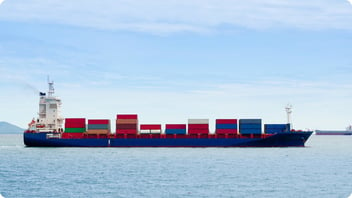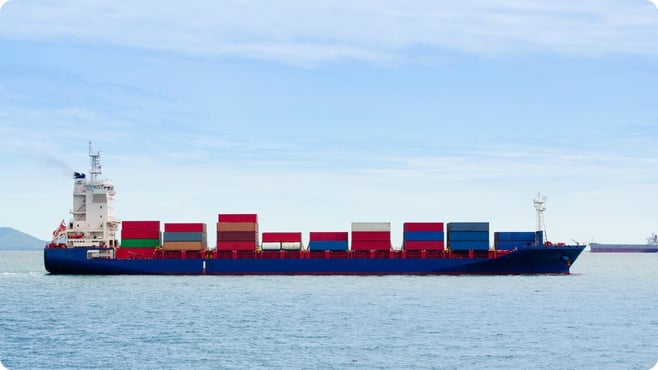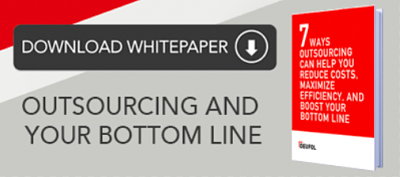There was a time when the phrase “international company” was used to signify a business’s size and scope. Only the biggest, most advanced companies were deemed “international.” Those days are long gone. Today, we’re all international businesses in one form or another.
Whether you’re manufacturing overseas and shipping your products back home, or have domestic-based production for global distribution, it’s likely that international shipping plays a role in your process in some form. As you may know from experience, shipping between countries comes with a level of complexity that doesn’t exist when you ship domestically.
"After all, you’re an expert on your products, not on global distribution."
There is the maze of regulations that govern shipments in and out of every country. There are the obscure rules and issues that can cause a costly delay in customs. And, of course, there are the quality concerns that exist whenever your products are in transit for extended periods. Your containers may get transferred on and off trucks, boats, trains, and more. There is plenty of opportunity for mishandling and damage.
As experienced as you may be with international shipping, it’s possible that you’re still making some costly mistakes. After all, you’re an expert on your products, not on global distribution.
Below are five common mistakes that we frequently see among even the most experienced international shippers.
Do any of these mistakes sound familiar? If so, it may be time to reassess your shipping processes, and possibly even consider partnering with an outside company to manage your process.
1. Not understanding your destination country’s regulations.
This is often the most misunderstood element of international distribution. Let’s face it: Customs and import rules in other countries can be complicated, challenging, and downright boring. It’s tough to grasp the rules in one country. If you’re shipping to several different nations, the task becomes even more difficult.
Unfortunately, there’s no way around this challenge. If you don’t understand all of the regulations in each country you ship to, you could face significant delays, penalties, and other costs. Inaccurate or incomplete paperwork could keep your container in customs for an extended period. The wrong packaging may pique curiosity an d trigger an inspection.
d trigger an inspection.
If you don’t know the regulations of your destination country or if you don’t have the desire or resources to learn those regulations, you may want to partner with a company that manages overseas shipping. They can use their knowledge and experience to help you avoid these kinds of delays.
2. Using incorrect packaging.
Many industrial companies rely on the good old-fashioned wooden crate for their shipping needs. In some cases, that may be an appropriate solution. However, consider that international shipping brings costs and challenges that don’t exist when you ship domestically. Because of those added challenges, you may want different packaging for your overseas containers.
For instance, your international shipment may go through different climates with different temperatures or levels of moisture in the air. Your package may be transferred to several different vehicles and may be handled differently at each point. There is usually greater exposure to quality risk during an international shipment than during domestic transit, if only because of the increased duration of the trip.
Consider the various risks that could threaten your product’s quality. Does your standard domestic packaging adequately protect against international risks? A packaging consultant can perform a risk analysis and help you determine which types of packaging may be most effective.
3. Forgetting important labels.
This mistake is closely aligned with the first one, but it’s important enough to warrant its own discussion. Labeling is a critical element of international shipping. Customs agents and package handlers look to external labels to make snap decisions about each container. If a label is missing information or is incorrect, the customs agent or handler could make the wrong decision.
"While it may be tempting to choose the least expensive option, you may actually pay more due to delays, fines, and quality issues."
For instance, a customs agent may not be able to find the origin address on a label or may not find information relating to the container’s contents. Without that data, he or she may be forced to have the package opened, which could compromise your quality protection.
Similarly, without the right labeling, a handler in a foreign country may not know that your packaging should only be handled a certain way or that it shouldn’t have other containers stacked on top of it. Again, quality becomes a concern.
4. Choosing the least expensive shipping company.
 There’s an old saying that if you’re on a budget, you really can’t afford the least expensive option. This is never more true than in international shipping.
There’s an old saying that if you’re on a budget, you really can’t afford the least expensive option. This is never more true than in international shipping.
A third-party shipping company can be a helpful partner, but only if they’re competent and qualified.
While it may be tempting to choose the least expensive option, you may actually pay more due to delays, fines, and quality issues. Look for a partner that has experience and deep knowledge in your industry and in your destination countries. Also, look for a partner with the technological capabilities to keep you informed of your container’s status at all times.
5. Not having your own team on the ground.
Perhaps the most challenging part of shipping internationally is that you don’t have your own team on the ground to oversee the process. Your materials may need to be packed or handled in a specific manner. You may want to ensure that the package isn’t exposed to certain elements. You might simply want your own set of trusted eyes with the package to make sure it stays on schedule.
That’s hard to do when you’re relying on a network of contractors and workers at various points along the route. They don’t understand the specifics regarding your container, so they can’t handle or monitor it according to your specifications.
It may make sense to opt for a partner who has experienced, knowledgeable team members on the ground in China and other foreign manufacturing centers. Those team members can guide your crate through the process. They can ensure quality and, if an issue arises, they can take corrective action. You may not be able to build your own overseas team, but you can partner with a company who has such a team in place.
Are you guilty of any of these mistakes? If so, now may be the time to evaluate your needs and objectives. International shipping can be costly and complex. There’s no reason to make it more difficult for yourself with preventable mistakes. ![]()






Let Us Know What You Thought about this Post.
Put your Comment Below.